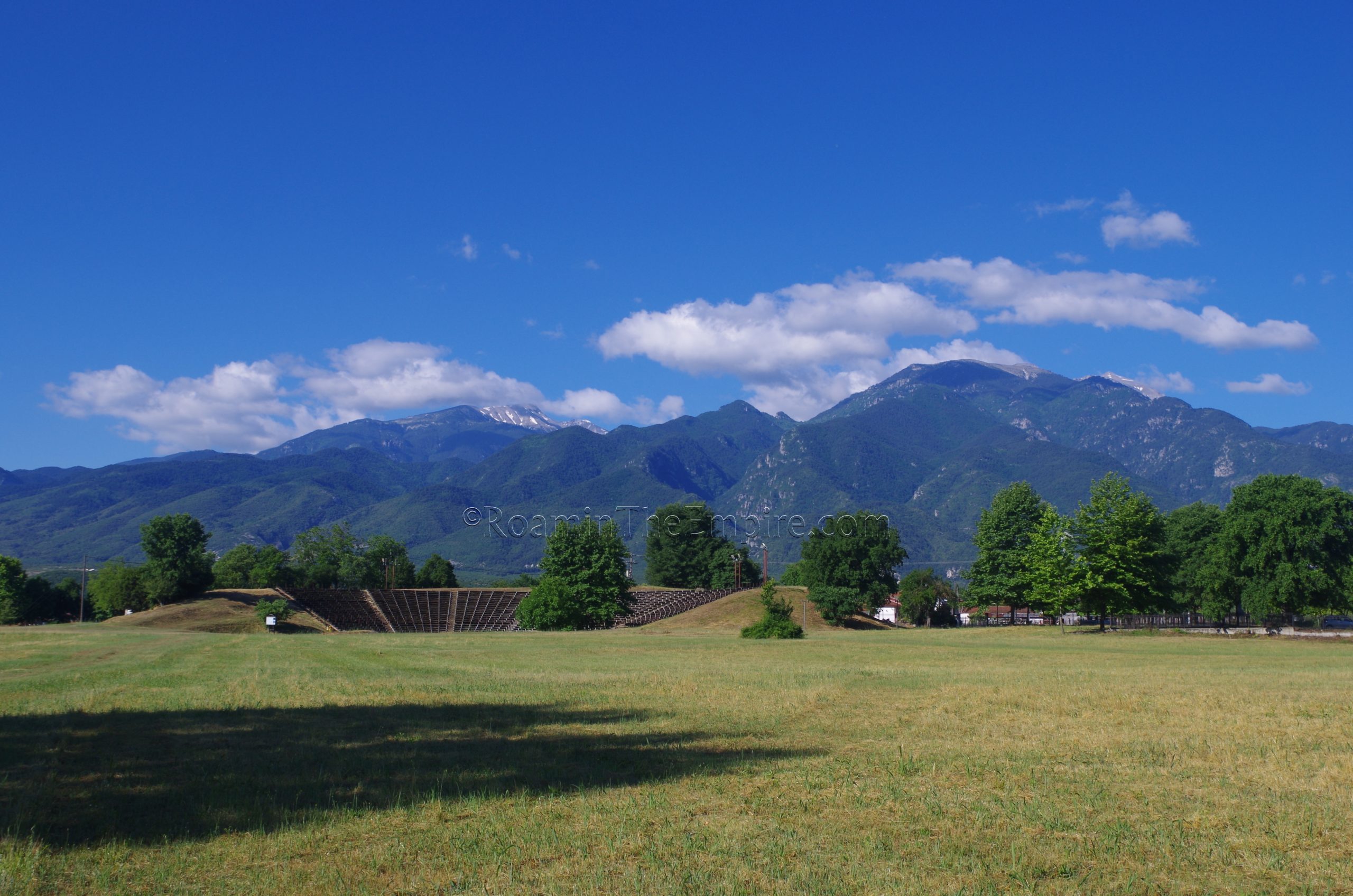
Most Recent Visit: June 2021
Known to the Greeks as Dion, the city that would become Dium under Roman rule is located on a plain in the foothills to the north of the Mons Olympus, Mount Olympus, in the region of Piera, the homeland of the Pieran people. The name Dion derives from Dios, a general term of divinity and a form of the Greek name for Zeus, whose seat of rule over the gods was based on nearby Mount Olympus. The Roman name of Dium was the linguistic Latin parallel. According to tradition, Deucalion, son of Prometheus, constructed the first altar dedicated to Zeus here following the great deluge, a catastrophe that wiped out humanity save for him and his wife Pyrrah. A further connection to Zeus, the area of Dium was the dwelling place of the Muses, daughters of Zeus.
Another tradition held that Orpheus was torn apart in the adjacent forests by the Pieran women in either a Dionysian frenzy or in retribution for his rebuff of their advances. The women then attempted to wash their bloody hands in the Helikon (modern Ourlia), which originally ran above ground past Dium. The river though, not wanting to be associated with the act, disappeared into the earth at the scene so the women could not wash themselves and then re-emerged at Dium and was known as the Vaphyras. Pausanias states that Orpheus was originally interred at nearby Leivithra, but after flooding washed the city away, Orpheus’ bones were brought to Dion by the Macedonians, who had expelled the Pierans from the area in the 8th century BCE. Diogenes Laertius claims, however, that the funerary inscription of Orpheus at Dium states he was killed by a thunderbolt from Zeus, not by the Pieran women.
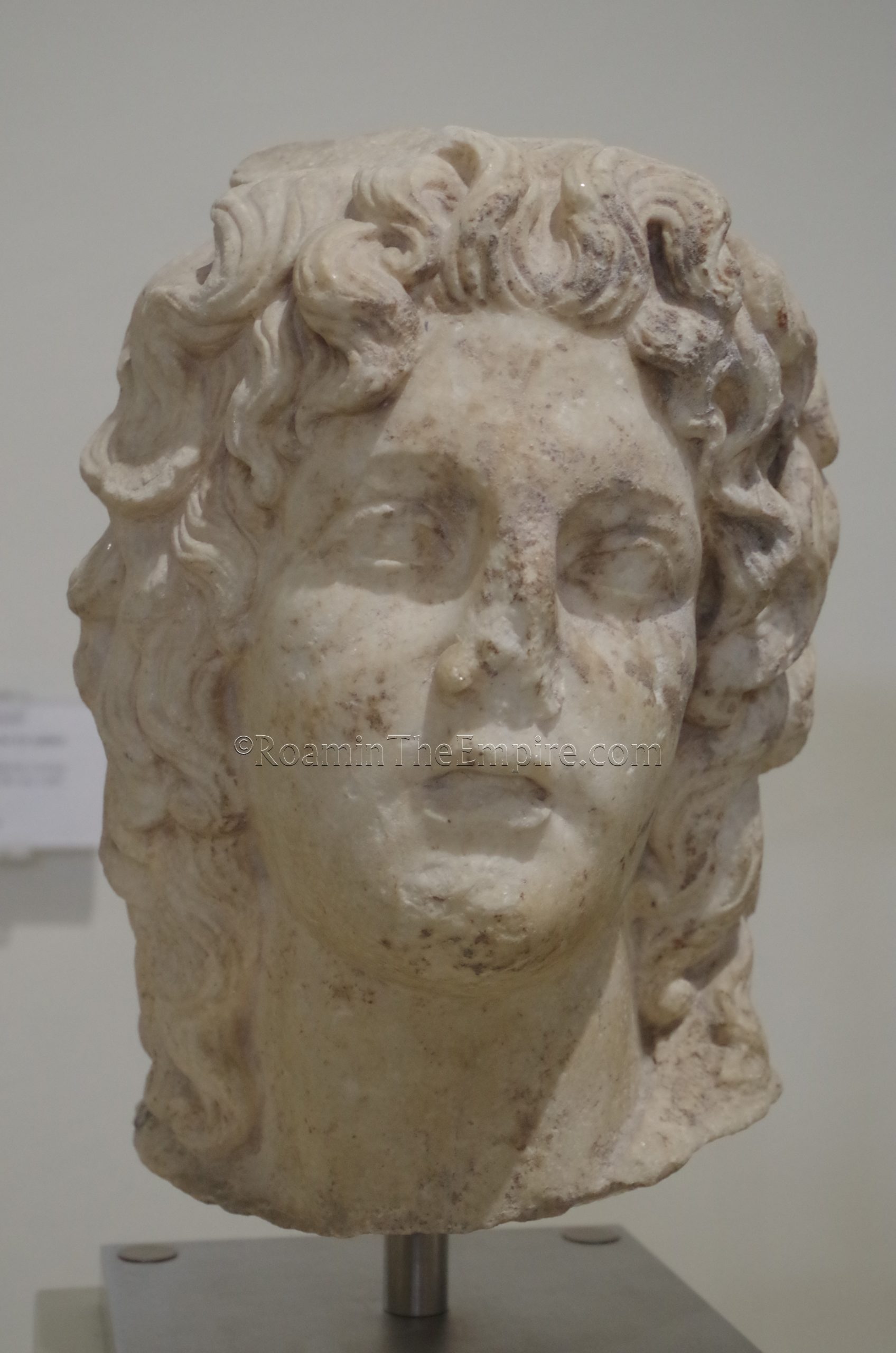
Though finds suggest habitation in the area dating back to at least the 15th-14th centuries BCE, it was not until the Macedonians took over the area that it began to grow into an important sanctuary, particularly under Archelaus I in the late 5th century BCE. The mythological founder of the Macedonian people, Makedon, was said by Hesiod to have been born on the Pieran slopes of Mount Olympus, in the area of Dion. Around 424 BCE, Dion is first mentioned as being one of the cities that the Spartan general Brasidas was unable to capture in his campaign in the area, instead forcing him to pillage the hinterlands. Not long after, Archelaus I would found a dramatic festival at Dion dedicated to Zeus and the Muses in late September, the end of the year for the Macedonians. Dium became a focal point of Macedonian culture in the 4th century BCE with Philip II celebrating the sack of Olynthos there and Alexander the Great holding a 9 day festival dedicated to Zeus and the Muses at Dium before departing on his Persian campaign. Alexander also famously had 25 bronze statues of his Companions who fell at the Battle of the Granicus, sculpted by Lysippos, and erected in the shrine of Zeus at Dium.
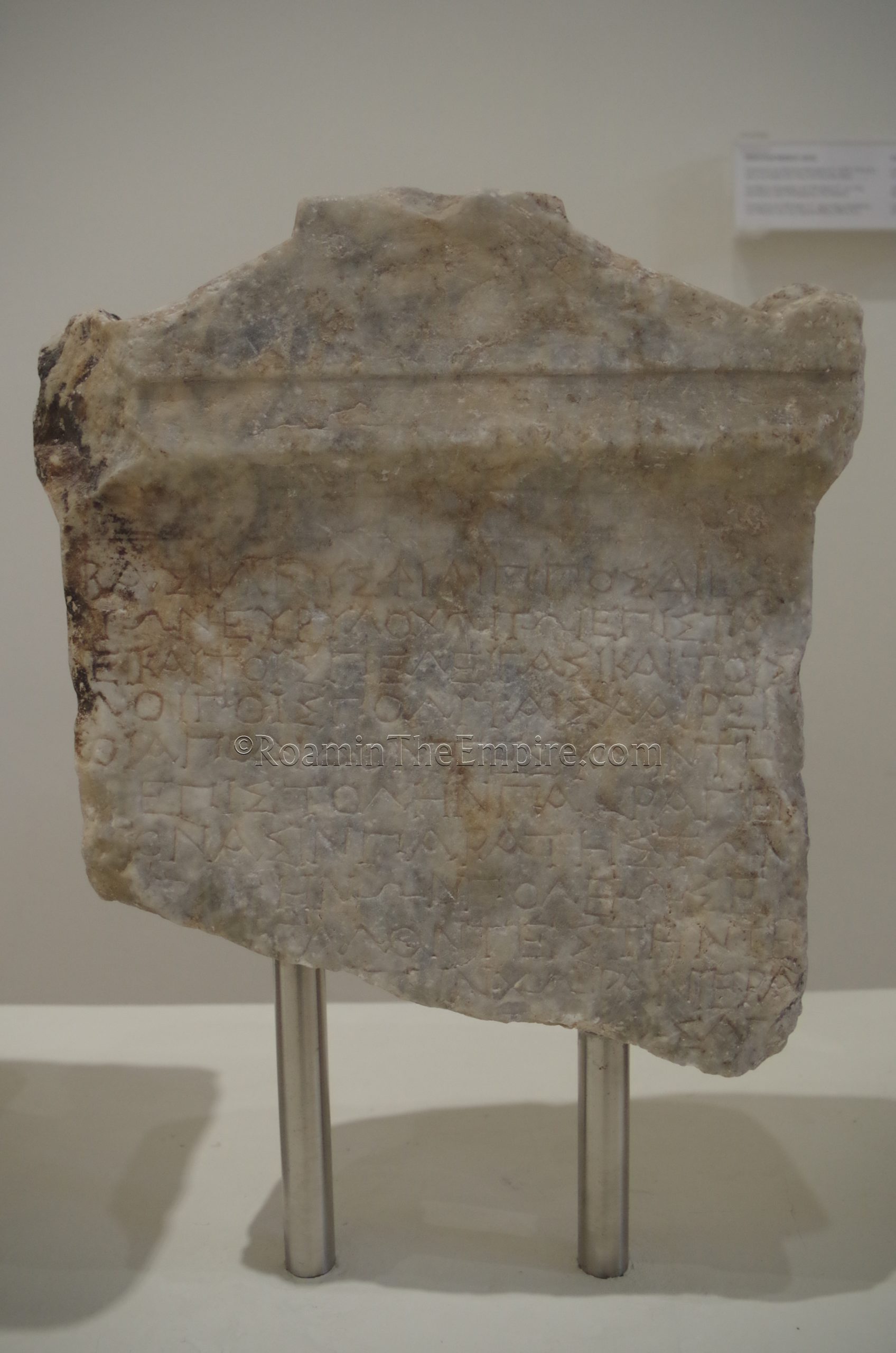
Dium prospered in the Hellenistic period until 219 BCE, when the Aetolian strategos Scopas sacked and destroyed the city during the Social War. It was rebuilt shortly after by Philip V, who also destroyed the Aetolian capitol Thermus in retribution for the destruction of Dium and Dodona. The city managed to recover in relatively short order and was once again flourishing at the commencement of the Third Macedonian War between Macedonia and Rome in 171 BCE. A few years into the war, in the spring of 169 BCE, a Roman army under the command of Quintus Marcius Philippus made its way toward Dium from the south. Perseus, the Macedonian king, ordered Dium abandoned and the inhabitants transferred to Pydna. By the time the Romans got to the city, it was largely unoccupied and, despite formidable defenses, was easily taken. During their time occupying the city, the Romans destroyed part of the fortifications, but Philippus made sure to protect the sanctuary of Zeus from harm during his occupation. The Romans eventually withdrew from Dium, at which point it was retaken by Perseus and the walls are noted as having been rebuilt. The Romans feigned another attack on the city, but did not actually engage. The war ended the following year after the decisive battle at nearby Pydna, resulting in the partition of Macedonia into four client kingdoms. A fourth and final Macedonian War from 150 to 148 BCE would see the Romans finally take direct control of Macedonia as a province. The Roman general in that conflict, Quintus Caecilius Metellus (shortly thereafter Macedonicus for his victory) apparently looted the Lysippos statues from the sanctuary.
After Roman hegemony reached the region, Dium began to receive Roman settlers and amenities. Around the time of the Battle of Actium in 31 BCE, Dium seems to have been resettled as the Colonia Julia Diensis. The time that followed seemed to be especially prosperous for Dium, seemingly at the expense of its neighbor, Pydna. Instability in the region caused a decline at Dium in the 3rd century CE and in the late 4th century CE, the city was sacked. The 4th century CE also saw a series of earthquakes strike the city, causing considerable damage. Flooding also contributed to decline. Dium recovered somewhat in the 5th century CE before finally being mostly abandoned within a century. Dium is last mentioned in historical records in the 10th century CE.
Getting There: Today, Dium is located near a town bearing the name of the ancient Greek settlement; Dion. Despite the quality of the site and museum, the site is still a bit off the beaten path. The nearest cities of any consequence, with developed transportation hubs (relatively speaking, as far as things go in Greece outside of Athens) are Larissa and Thessaloniki. Even those require about 2 hours, a train, and two buses to get to Dion. The stop on the train line, Katherini, is pretty much exactly midpoint between the two cities. One then needs to take bus 14 to the center of Katherini, and then bus 03 from there to the center of Dion. Finding current timetables for these buses can be problematic, though. The other option, of course, is a private vehicle, which puts the trip at about an hour from either Larissa or Thessaloniki. There’s a large parking area at the archaeological site and some street parking around the museum (which is also about a 5 minute walk from the site).
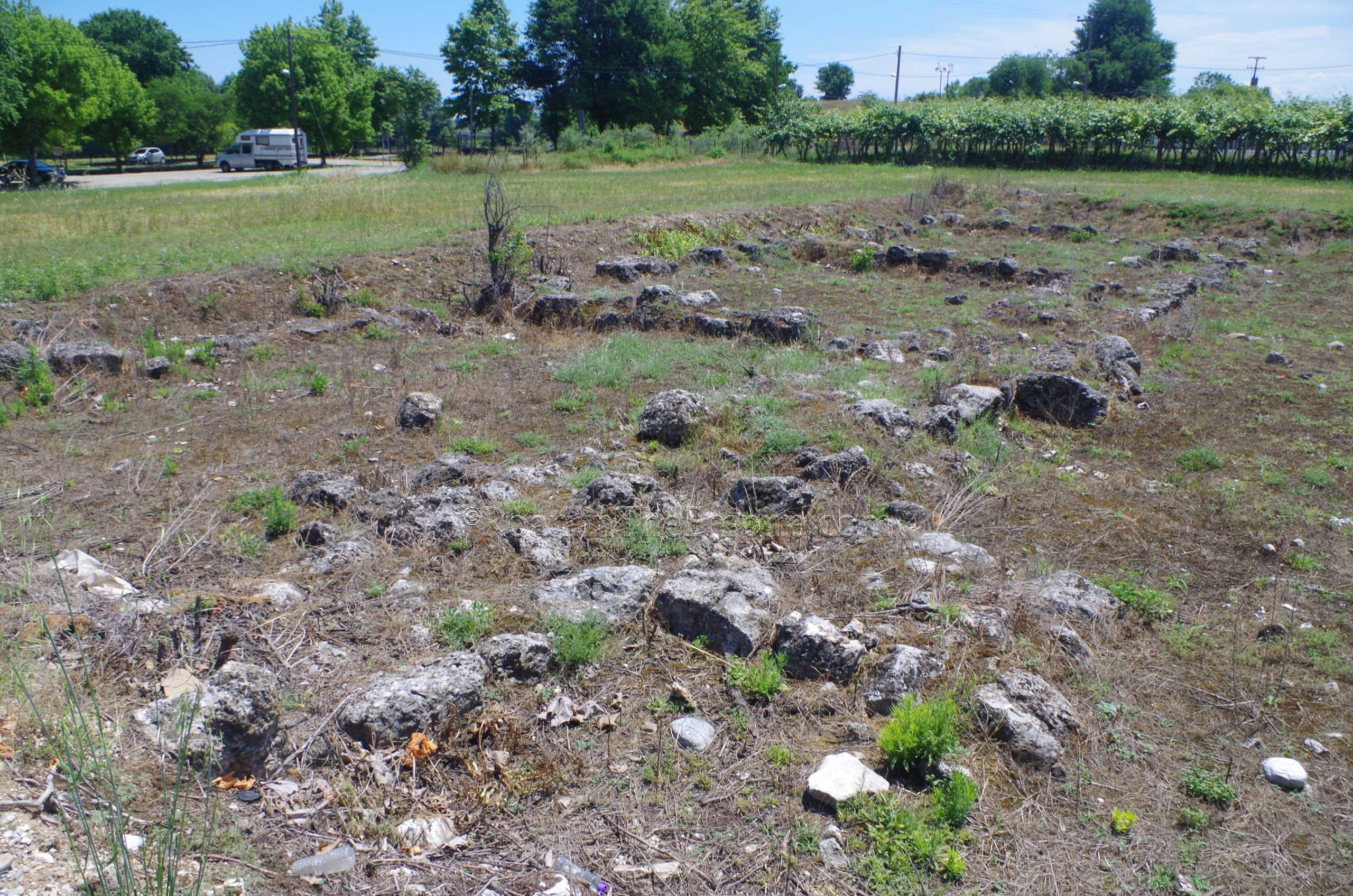
The main archaeological area is located just at the eastern edge of the modern town of Dion. There’s no actual address for the site, as apparently the road it is on is not named. There are lots of signs, so it’s relatively easy to find, and marked on my map. The site is open every day in the summer (mid-April through October) from 8:00 to 20:00. The rest of the year it is open Wednesday through Monday from 8:30 to 15:30 and is closed on Tuesday. Admission is 8 Euros and includes entrance to the archaeological museum.
Before entering the site, along another unnamed road about 60 meters west of the parking area for the archaeological site, are the scant remains of the stadium of the ancient city. They are not marked and are not particularly well kept, but are visible. The original stadium of Dium was a predominantly earthen construction, traditionally associated with the festivities instituted by Archelaus I and constructed around that time, the late 5th century BCE. It may date as far back as the reign of Alexander I in the early 5th century BCE, though. Sometime in the late 3rd or early 2nd century BCE the stadium was drastically renovated from its previous earthen construction to a larger stone constructed building. It is from this period that the remains which can be seen, a roughly 25 meter by 17 meter rectangular area with what would appear to be the foundations of the support of the seating. The location of the stadium was outside the city walls of Dium.
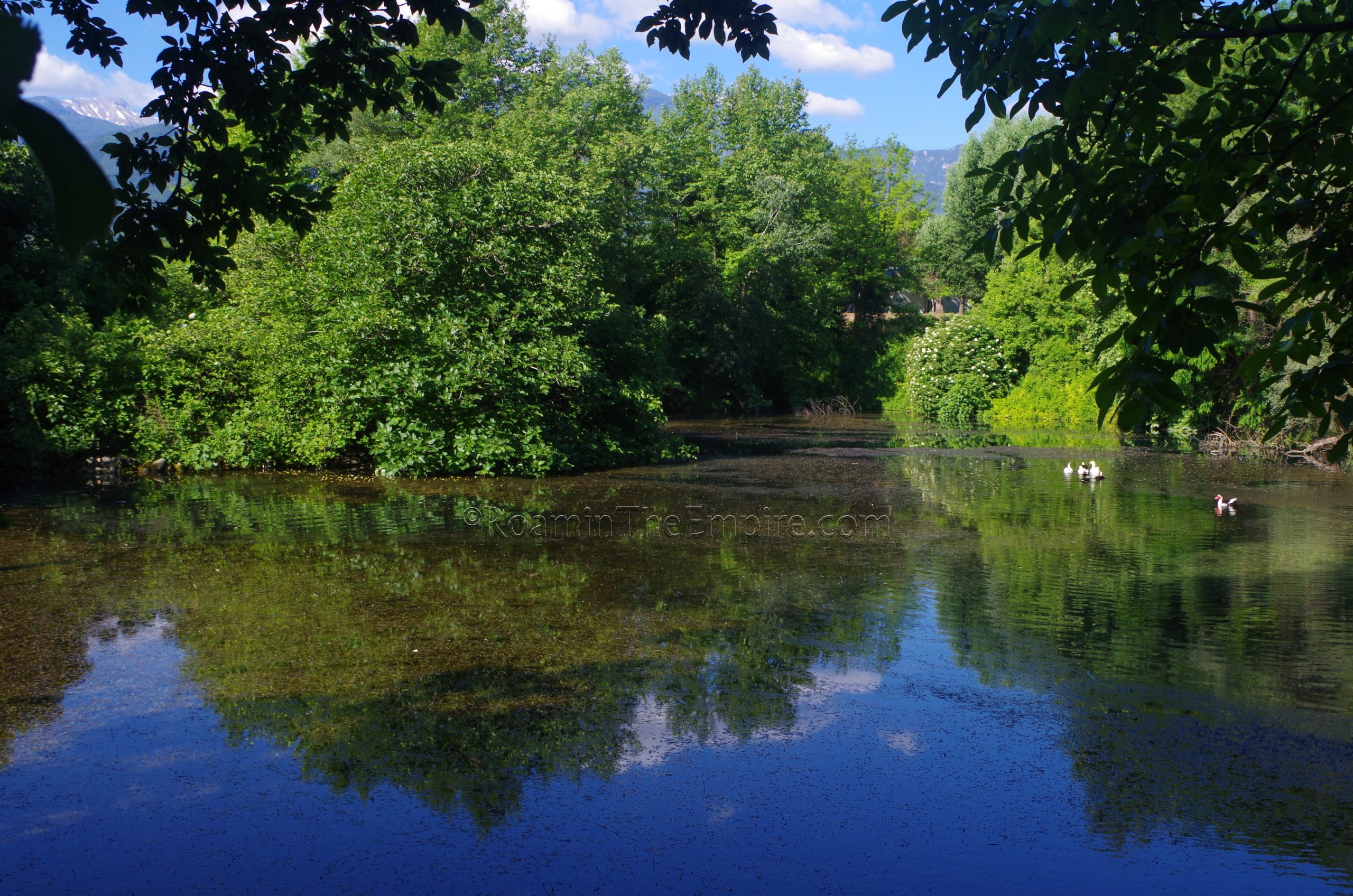
Taking the main path from the entry of the archaeological area eastward, the first major point of interest is the large (relatively speaking) body of water off to the right (south/southeast) of the path. This wetland area and pond is fed by a natural spring which then empties out into a stream to the east. This area is believed to have been where a sacred grove to the Muses may have been located. There doesn’t seem to be any visible ancient constructions here, and the immediate area around the pond is naturally pretty overgrown, so there are very few places that afford good looks; though they are there. This is, notably, not the spring from which the Helikon re-emerged as the Vaphyras, which is located about 400 meters to the east.
Continuing toward the east, the path eventually comes to an intersection a little past the eastern edge of the pond. Taking that path to the south, about 115 meters on, on the east side of the path are the remains of the Sanctuary of Asclepius, just opposite another, smaller pool of water from a natural spring on the west side of the path. The sanctuary seems to have originally been constructed in the 4th century BCE and became a particularly prominent feature during the Roman imperial period. It was in use until about the 3rd century CE. The location so close to this natural spring was likely intentional, as it provided a source of water for the purification rituals that would have played a significant role in the activities at the sanctuary.
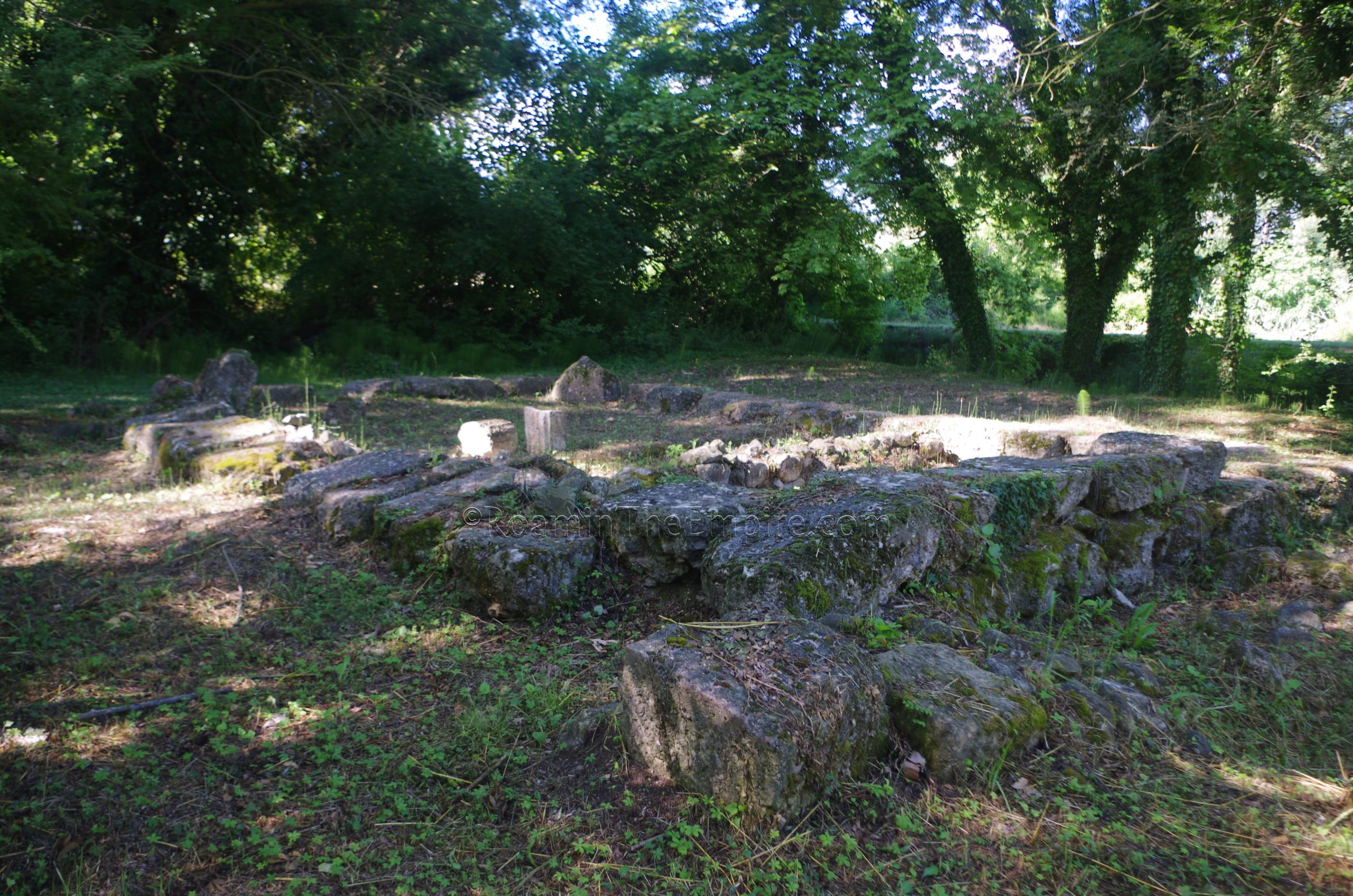
Just next to the path are some scant excavated remains, but there are some more significant structures in several meters from the road, but kind of hidden a bit depending on how the overgrowth is. If I had one criticism of the archaeological park, it is that there is often not much information on the actual remains in a specific way that helps the visitor reconstruct what they’re actually looking at. This isn’t always the case, but it is the case here. And even doing outside research doesn’t reveal much more, at least not in English, anyway. So it’s hard to sort out what is here, but the sanctuary included a stoa, latrines, and an enkoimeterion. An oikos-style temple and a sacred grove were also features of the sanctuary. It is the oikos-style temple which seems to be the primary set of remains that is visible now, but that is not made explicitly clear.
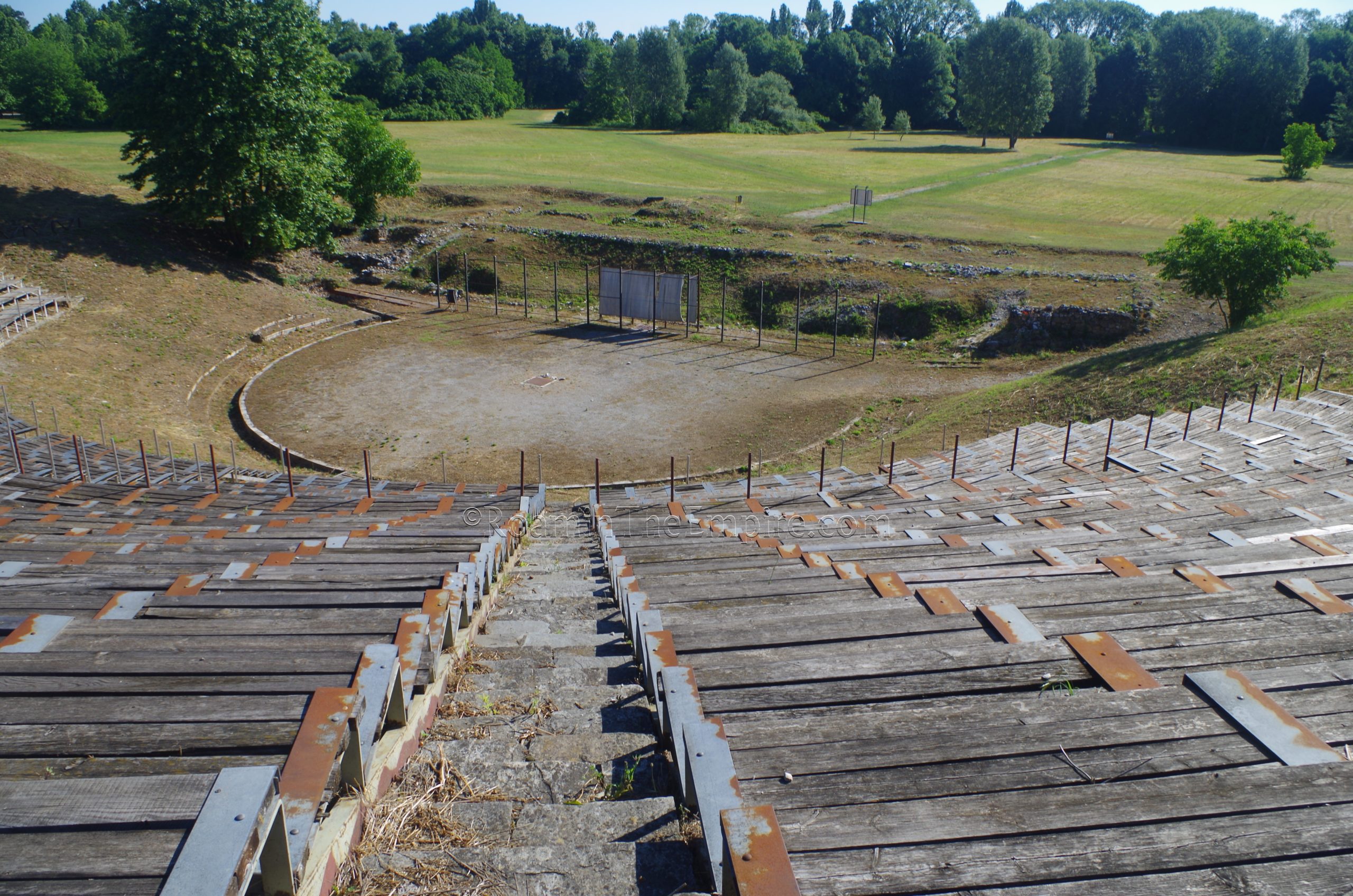
Heading due south about another 100 meters from the Sanctuary of Asclepius, is a gravel path that heads off to the west about 200 meters to the Hellenistic Theater. This is alternatively referred to as the Great Theater or the Hellenistic Theater. The theater is built with the cavea supported by an artificial earthen mound. This form of the theater seems to have been built in the early 4th century BCE, during the time of Amyntas III. It likely replaced an earlier, smaller theater that was built during or previous to the building program instituted here under Archelaus I. There doesn’t seem to be anything visible of the original seating, which has presumably been covered up, as some did seem to exist at excavation. Modern wooden benching covers most of the area of the cavea. Foundations of the scenae area are visible and give a pretty good impression of how this area of the theater looked in antiquity, though it is only preserved at the ground level. A metal plate in the middle of the orchestra covers the exit of a passageway that ran from under the scenae called the Charōnioi klimakes, Charon’s staircase. This served the entrance to the underworld in plays.
Sources:
Agiamarniotis, Georgios. The Sanctuary of Demeter at Dion and the Cults Worshipped There.
Evangelidis, Vasilis. “Agoras and For a: Developments in the Central Public Spaces of the Cities of Greece During the Roman Period.” The Annual of the British School at Athens, Vol. 109, 2014, pp. 335-356.
Evangelidis, Vasilis. “Macella and Makelloi in Roman Greece: The Archaeological and Textual Evidence.” Hesperia: The Journal of the American School of Classical Studies at Athens, Vol. 88, No. 2, April-June 2019, pp. 283-318.
Lolos, Yannis A. “The Hadrianic Aqueduct of Corinth.” Hesperia: The Journal of the American School of Classical Studies at Athens, Vol. 66, No. 2, 1997, pp. 271-314.
Pandermalis, Dimitrios. Dion: The Archaeological Site and the Museum. Translated by David A. Hardy. Athens: Adam Editions, 1997.
Pingiatoglou, Semeli. “Cults of Female Deities at Dion.” Kernos, Vol. 23, 2013, pp. 179-92.
Smith, William. Dictionary of Greek and Roman Geography. Walton & Murray, 1870.
Stillwell, Richard, William L. MacDonald, and Marian Holland. McAllister. The Princeton Encyclopedia of Classical Sites. Princeton, NJ: Princeton U Press, 1976.
Thucydides. Histories, 4.109.


